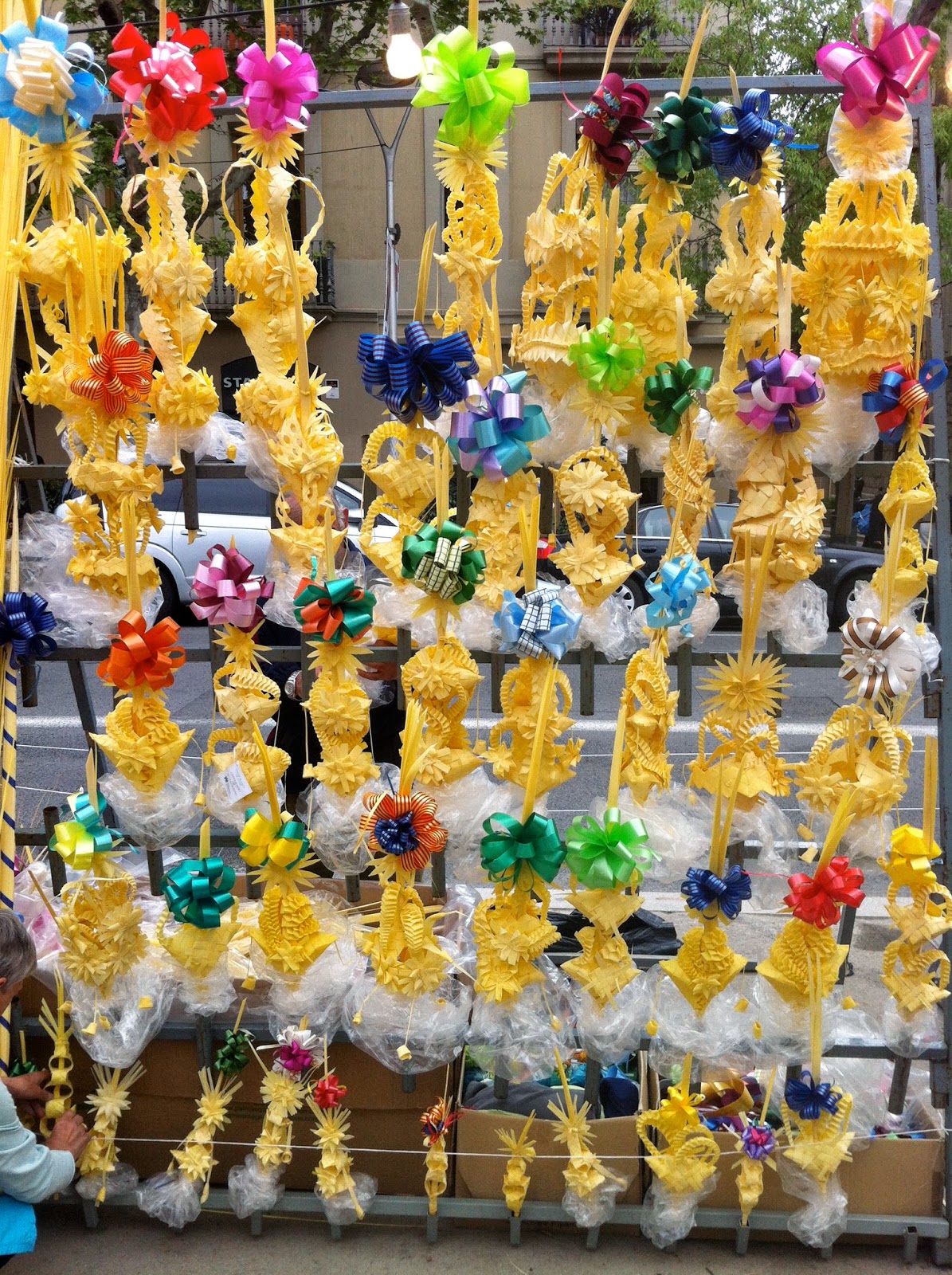This Wednesday (April 23) was all about
roses and books here in Cataluña. It was La
Diada de Sant Jordi (St George´s Day). The day of love (hence the
roses) and Catalan culture (the books).
If you’re anything like me, you might only
connect Saint George with England. But he´s actually the patron saint of many
places and has been an important part of Catalan identity since at least the 14th
century. The shimmering roof of Casa Batlló, one
of Antoni Gaudí´s masterpieces on the Passeig de Gracia, actually represents the dragon from the legend of "Saint George and the Dragon".
 |
| Casa Batlló. The scaly, shimmering roof represents St George's dragon |
I was reminded that it was La Diada de Sant Jordi the moment I stepped outside my building as there was a little stall selling roses right there. Walking into the centre (my barrio is about a 15 minute stroll to Plaça Cataluña), I passed a rose stall on just about every corner (although I do have to say that some gave me the distinct impression that they may be flogging roses that had fallen off the back of a truck).
 |
| These roses I'm sure did NOT fall off the back of a truck... |
But the real action was in town. Barcelona’s
famous Rambla, along with The Rambla de Cataluña and the Passeig de Gracia were crammed with stall-after-stall, wrapped in Catalan flags (with varying degrees of
love and care) and piled high with books or roses or both. And people. More
people than I had ever seen on these streets – it took me half an hour to just
walk a few blocks!
There was a very impressive number of book
signings going on, a rose market in the Plaça de San Jaume and the beautiful
Palace of the Generalitat (the
Catalan government) was open to the public. In Plaça Cataluña, local
Catalan-speaking TV stations were broadcasting live, along with Catalan radio
and even Spain’s national broadcaster.
I eventually bought my rose from a stall set
up by a local school. I saw others being run by bookstores and florists (obviously), clothes stores,
toy stores (selling dragons, castles and Saint Georges), car
dealerships, hotels, charities, animal welfare groups (including one of my
favourites: SOS Greyhounds), LGBTI groups, political parties and, of course,
the various Catalan independence groups.
Saint Jordi is not exactly a day for Catalan
nationalism (that's La Diada Nacional de Cataluña on September 11), but with the current Catalan independence push, there was clearly an air of nationalism mixed in with all the roses and books.
A referendum on Independence has been
scheduled for the coming 9th of November. The central government has
branded the referendum illegal, pledging that it won’t go ahead, but the Generalitat (currently an interesting coalition of conservative and left-wing nationalist parties) is pushing on. And so the Independistas were out in force on
Wednesday, collecting signatures in support of the referendum and pushing the "Si + Si" ("yes + yes") campaign for the two questions:
"Do you want Catalonia to
become a State?" and in case of an affirmative response, "Do you want this
State to be independent?"
 |
| "Say what Spain may, Referendum!" |
If the referendum goes ahead (and that is a big "if") and the "Si + Si" campaign wins, this might have been my first and last Diada de Sant Jordi as a resident of Barcelona. You see, G and I are here as Italian citizens (my dad was Italian and G is Italian-Italian) and according to Spain and Europe, Cataluña will be kicked out of the EU if it chooses to go it alone, which could leave the huge number of resident ex-pats here from other EU countries in a bit of a limbo.
Best not to think about that for now and just smell the roses…





















